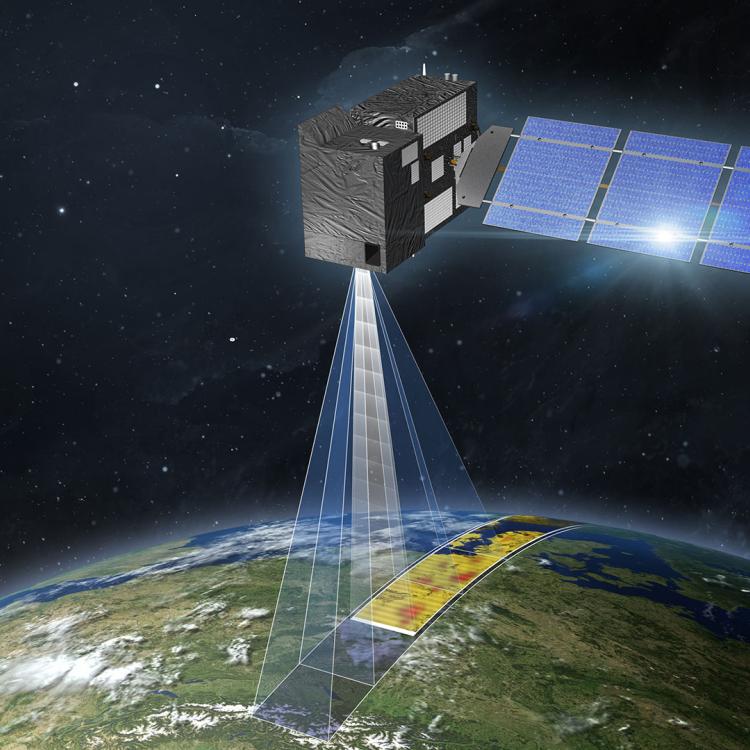13 May 2025
14 June 2021
The CO2M mission will include observations of nitrogen dioxide (NO₂) to determine emission plumes. These observations will be on a high spatial resolution of 2x2 km². Other aspects of the CO2M NO₂ observations will also differ from previous missions, including the overpass time and the optional glint mode over the ocean. The aim of this study is to develop the algorithms that derive the NO₂ tropospheric column (NO₂ TTC) from the CO2M observations. These algorithms will contain heritage from previous satellite missions and new innovations specifically developed for CO2M.
The first phase of the work (Work Packages 11 to 15) was arranged as a sub-task of the Scientific support service (Scientific support for CO2M Level-1 processing requirements | EUMETSAT Website). Subsequently (from WP 53 onwards) it became part of a direct contract with the Royal Netherlands Meteorological Institute (KNMI).
Objectives
The objectives of the study are:
- To derive the specific needs and potentials for the NO₂ TTC processing, according to instrument design and mission objectives.
- To establish the error budget of the NO₂ TTC product for CO2M.
- To develop the Algorithm Theoretical Basis Document (ATBD) for the CO2M NO₂ TTC level 2 data product.
Overview
This study develops the CO2M NO₂ TTC algorithm based on the specific needs and possibilities of the CO2M mission and instruments. In particular the following aspects are taken into considerations:
- The objective of the NO₂ observations is to support greenhouse gas observations.
- The high spatial resolution.
- The availability of the aerosol (MAP) and cloud mapping (CLIM) instruments.
- Measurement in glint mode over the ocean.
- Anisotropic surface modeling at high spatial resolution using BRDF products for land, water, and snow surfaces.
- The use of high-resolution NO₂ a-priori profiles derived from CAMS global model forecasts to provide the NO₂ profile shape and stratospheric NO₂ column.
- A cloud correction scheme using the O₂-O₂ absorption feature, a scattering cloud model and CLIM cloud data.
- The use of neural networks to replace traditional look-up tables for radiative transfer calculations in the retrieval algorithm.
The study provides and maintains the ATBD for the NO₂ TTC Level 2 product, taking into account heritage from previous algorithm developments (Sentinel 5P, Sentinel 4, Sentinel 5, GEMS and TEMPO). As the ATBD evolves it will focus on the baseline algorithm components but will also describe possible future enhancements of the algorithm.
To support the ATBD development, simulation and retrieval algorithm breadboard software has been set-up. A methodology for reporting the error budget is also being developed. Where possible, the ATBD developments will be aligned with activities performed by ESA, and activities performed in other EUMETSAT studies for CO2M.




